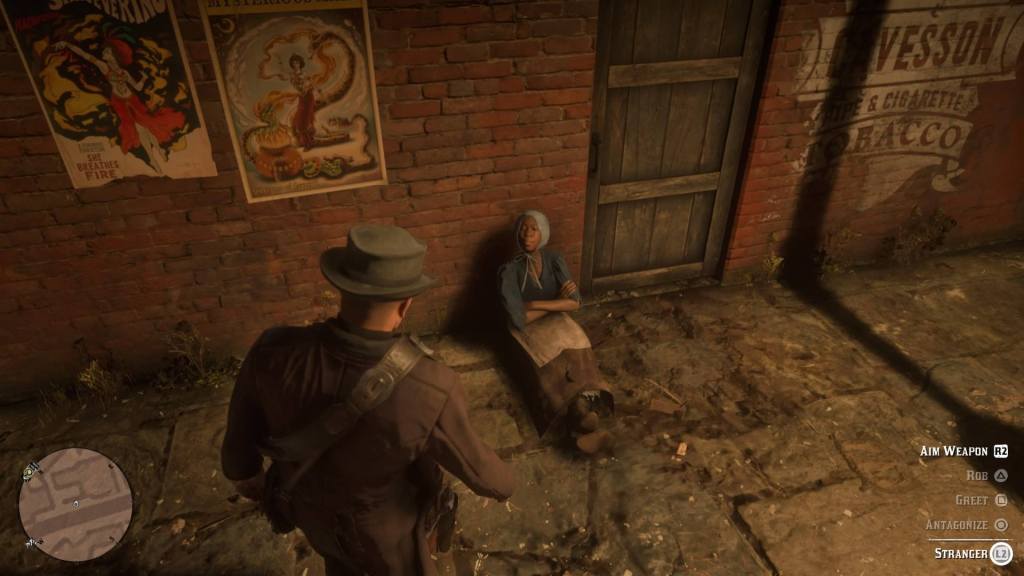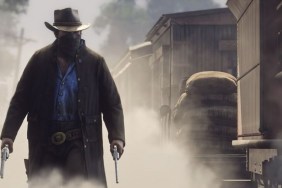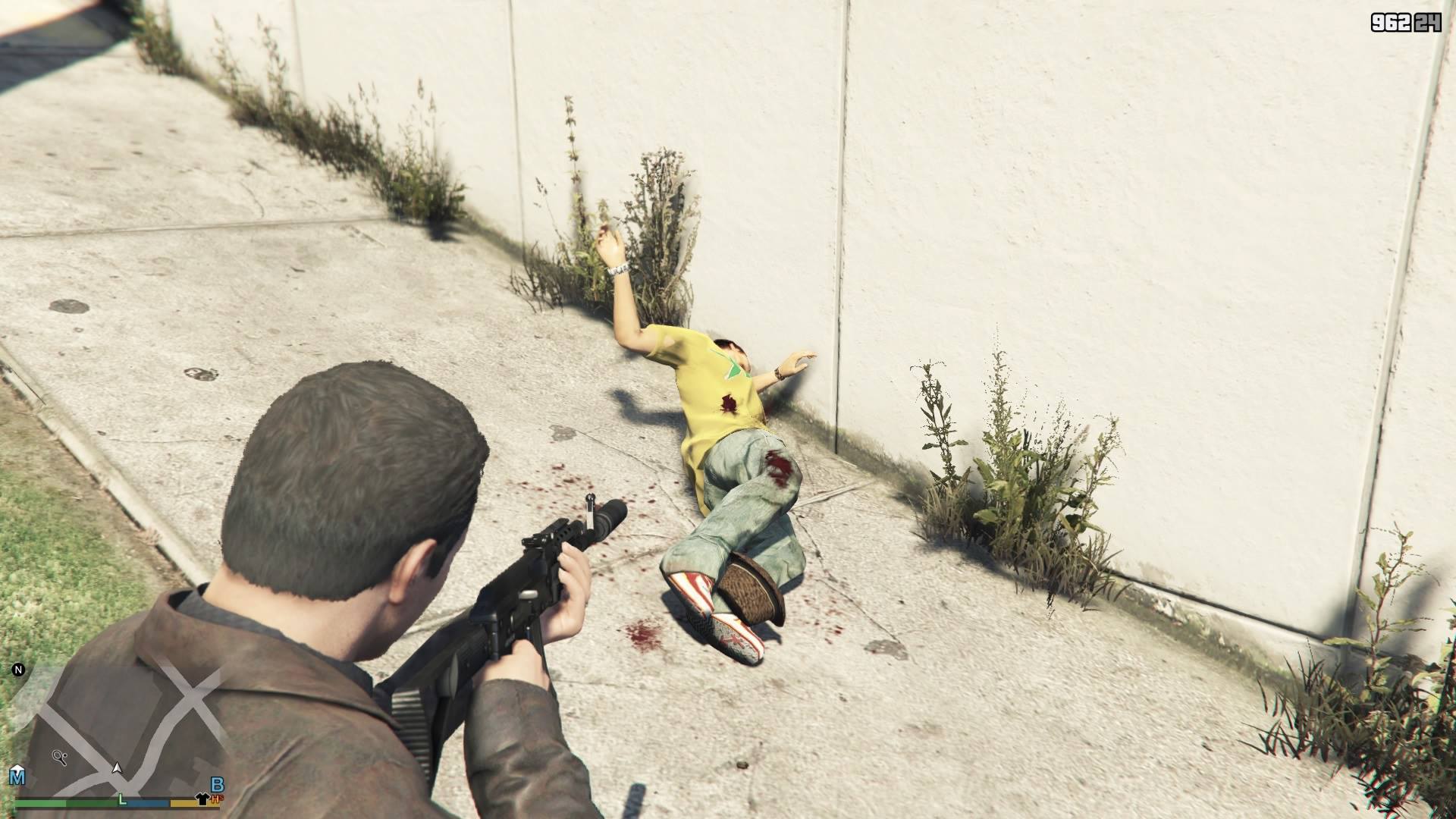
In a business district in Grand Theft Auto V, I walk up to a man eating a sandwich on the sidewalk. He doesn’t acknowledge me. That makes me angry, so I stand in front of him, blocking his path. He walks around me. Little does he know I have an arsenal of firearms hidden beneath my burgundy leather jacket. I reveal one of those weapons—a Combat MG—and before this schlub can drop his sandwich and run, I empty a full clip into his chest. I’m not gonna be ignored, Dan.
This may strike you as a bit of an overreaction. I agree. Unfortunately, this is the only reaction available.
The Words Won’t Come Out
Criticizing video games for only allowing interactions that take place at the end of a gun isn’t new (this Paste article from 2014 is one of the best examples of that kind of critique). However, the massive open world game that allows varied interaction with every single character in its world is new. And, when viewed from that angle, Rockstar’s last 10/10 suffers in comparison to its latest 10/10.
Red Dead Redemption 2 is a game about community. The community in question is a ragtag gang of thieves, murderers, and sundry bastards. But, they’re thieves, murderers, and sundry bastards you can feel happy returning to at the end of a long hunting trip. If you’ve played the first game—or if you’ve ever met a self-righteous bullshitter—you won’t buy Dutch van der Linde’s portrayal of his namesake gang as Robin Hood types. But, it’s a compelling community anyway. Between hauling potato sacks, drinking coffee, and singing dirty songs around the campfire, you feel like you belong, somehow.
A “Howdy Partner”-Shaped Hole
Mostly though, the world in Rockstar’s latest feels alive thanks to one small, button-sized decision that has massive world-enlivening implications: the left trigger has been reborn. Aim-down-sights is out; Greet, Antagonize, Rob is in. Talking, rather than shooting, becomes your primary way of interacting with the world.
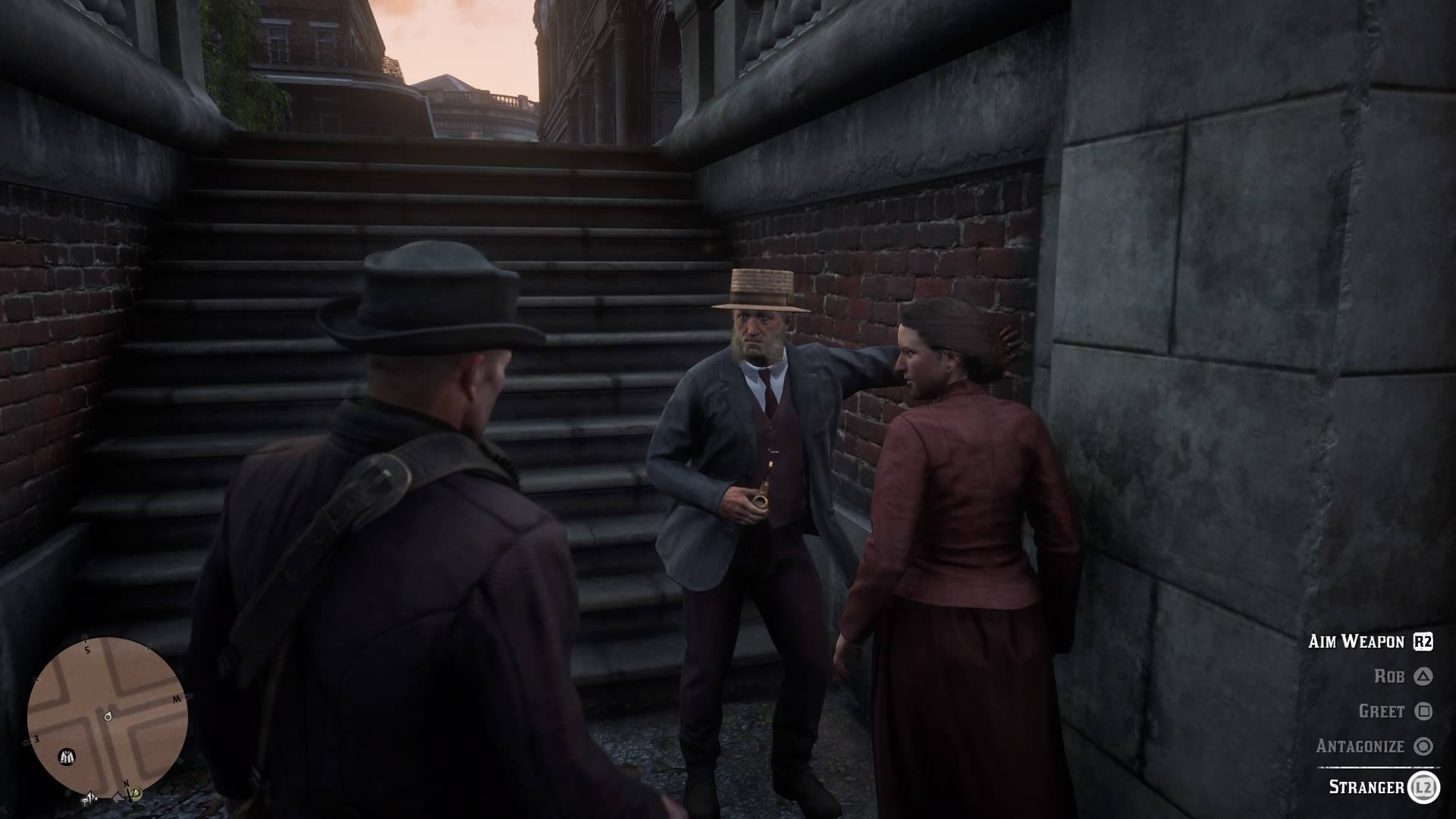
This may have just been the next step for Rockstar’s open worlds. It’s likely that Grand Theft Auto VI, or whatever Rockstar makes next, will incorporate this mechanic in some form. But, it’s fitting that it arose here and now.
Going back to GTAV, the greet option feels conspicuously absent. Franklin’s aunt tells me she’ll have a “gentleman callin’ later,” and I should make myself scarce. I can’t be a smartass back; I can’t say anything back. I can stand in her general direction as she shifts uncomfortably on the couch. As Michael, I can walk into Tracey’s room as she talks on her phone, but I can’t tell her to keep it down or interrogate her about her questionable conversations. I can stand there and listen.
I Don’t Like You, You Don’t Like Me
All of this kind of fits thematically. While Red Dead Redemption 2 is a game about community, GTA has always been about causing violent mayhem. GTAV makes this theme fit its characters. Trevor wouldn’t greet everyone on the street; Trevor is a psychopath! Michael’s family doesn’t respect him! They don’t want to talk to him!
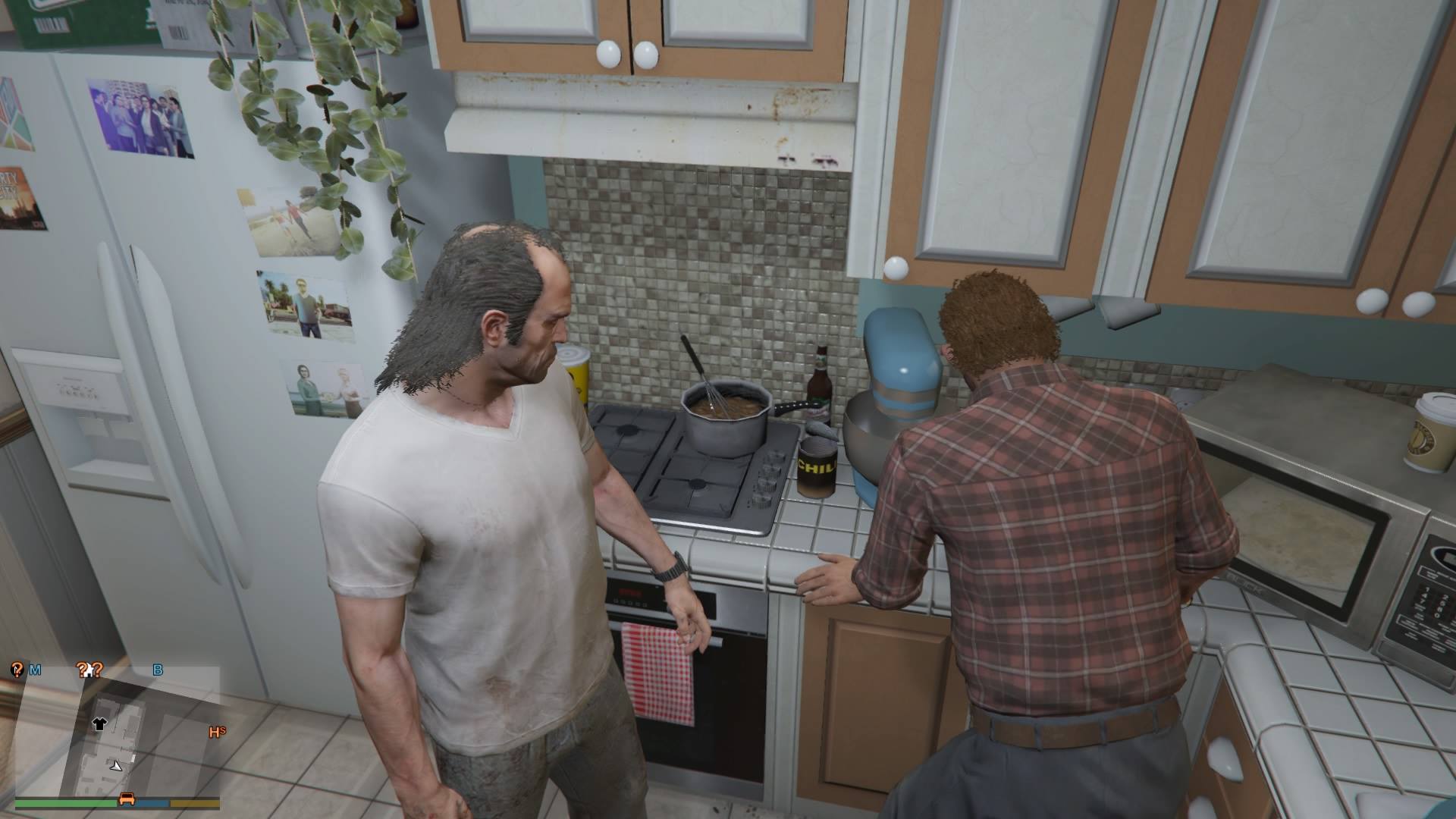
And, likewise, you probably don’t want to talk to them. Almost without exception, Grand Theft Auto V’s NPCs are viscerally unlikable. Beverly Felton is a gross opportunist. Lazlow Jones dry humps Tracey during her “Fame or Shame” audition. Amanda’s yoga instructor is lazy parody of a yoga instructor. These people suck.
GTAV’s three protagonists are, in general, bad people. But, they’re complex, multi-faceted bad people. By contrast, everyone you meet in San Andreas is a caricature of a caricature. These are people who make the characters in a bottom shelf SNL sketch seem three-dimensional.
So, when I think about what I miss as I play GTAV—a game that I generally really enjoy for its gorgeous setting, compelling mission design, multi-step heists and sharply written leads—I realize that I don’t miss the greet button. I miss the people who were worth greeting. That button was my portal to an alternate reality, a world where the characters in video games deserved better than indifference or a bullet in their guts.
